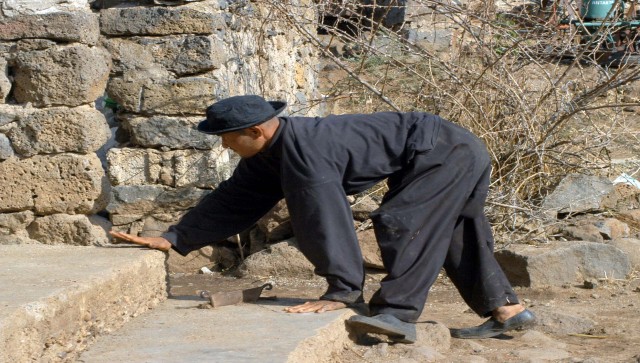In Turkey’s remote village resides a family that appears to challenge the world’s understanding of human evolution. The Ulas family has baffled scientists for quite a long time because some of its members walk on all fours, which had not been observed in fully-grown adults before this discovery. In fact, Turkish scientists have called the family as proof of “backward evolution.” Let’s take a closer look. Also read: Scientists find a bacteria that can 'eat' methane. But can it curb global heating? About the family walking on fours The Ulas family is believed to be the first known group of people to walk on quadrupedal legs, according to the New York Post. The Family That Walks on All Fours, a BBC documentary released in 2006, was the first to detail this extraordinary behaviour. In the video, the family members can be seen performing a “bear crawl” while utilising their palms. A scientific paper that provides information about the family has also been published.
Four sisters and one brother were born with the unusual trait that may provide insight into why our ancestors made the transition from four-legged to two-legged animals, according to Professor Nicholas Humphrey, an evolutionary psychologist from the London School of Economics, who was quoted by the British outlet. Unfortunately, the family lost a sixth member who had the trait. “I never expected that even under the most extraordinary scientific fantasy modern human beings could return to an animal state,” Professor Humphrey said on 60 Minutes Australia, adding, “The thing which marks us off from the rest of the animal world is the fact that we’re the species which walks on two legs and holds our heads high in the air.” “Of course, it’s language and all other sorts of things too, but it’s terribly important to our sense of ourselves as being different from others in the animal kingdom. These people cross that boundary,” the expert explained. Also read: Why ISRO scientists don’t find visiting temples antithetical to scientific temperament Different theories The documentary boldly asserted that the Ulas family “shouldn’t exist” and provocatively referred to them as maybe “the missing link between man and ape.” It also stated their “untold significance for every one of us.” Turkish scientists suggested that a type of “devolution” might have taken place, potentially undoing three million years of evolution, in a groundbreaking study. Professor Humphreys called this controversial theory “deeply insulting” and “scientifically irresponsible” in a BBC documentary, which sparked a backlash against it. According to the Daily Star, researchers at Liverpool University discovered that the study’s focus group of kids had skeletons more like apes than humans and a shrinking cerebellum, a disease that often has no influence on other people’s ability to walk on two legs. The palms of these humans’ hands are used to move around, which is a huge contrast from how apes move about. “I think it’s possible that what we are seeing in this family is something that does correspond to a time when we didn’t walk like chimpanzees but was an important step between coming down from the trees and becoming fully bipedal,” Humphrey told BBC. Additionally, he mentioned that the growth of the kids might have been hampered because standing up after nine months wasn’t always encouraged. By the time Humphrey returned to Turkey, the kids’ mobility had significantly improved thanks to the physiotherapist and special apparatus that helped them walk on two feet. Also read: Explained: E-skin invented by scientists that mimics our sense of touch With inputs from agencies


)

)
)
)
)
)
)
)
)



